NUFC Income Since the Takeover
Andy Trobe looks at the money coming in - with thanks and credit to Swiss Ramble for the charts
Over the last 10 years, how many clubs have won a domestic trophy generating less revenue than, and I apologise for using the term, the “big six”?
The answer is one.
And the 30 years prior to that? Pretty much the same picture. The big six dominated with the odd interloper (not us obviously!).
We can rant down the pub about tactics, the manager, the training facilities and everything else to explain our latest defeat. But the pretty depressing fact is that everything, over the long-term, is secondary to the income a club generates. If you get this right, everything else will fall into place.
Under Mike Ashley, NUFC got this horrifically wrong. Our turnover, other than the centrally negotiated broadcasting contract, barely grew over 14 years. We fell light years behind not just the “big six” but several other clubs including Leicester, Wolves and Leeds. The results on the pitch mirrored this appalling off-field performance.
This shouldn’t come as a surprise. Those clubs that generate the highest income, can afford to sign the best players and pay the wages they demand. They can develop the best training facilities. Of course, there’s exceptions but if you’re not one of the top income generators, the chances of winning a trophy or even qualifying for Europe are close to non-existent.
And other than keeping NUFC in the top-flight, this was the biggest challenge facing PIF, Staveley and the Reubens when they bought the club. And they’ve done remarkably well which Staveley should take great credit.
In the first full set of financial results since the takeover (22/23), NUFC increased their turnover by 69%. They’ve caught up and overtaken everybody except the big six. In just two years, they’ve moved 12 places up the Deloitte Money List (of world’s richest clubs) from 29th (20/21) to 17th (22/23).
But the biggest challenge remains. To even match the 6th place club, we’d have to generate an additional eye watering £215m! So how do we catch up and even overtake the “big six”?
Well, the Premier League’s Profit & Sustainability rules are determined to make it as difficult as possible. Now depending on your point of view, this can be seen as a horrendously unfair restriction of trade designed to maintain the Big Six cartel’s dominance from those aspirational clubs seeking to gatecrash the party.
Or alternatively you can see the rules as maintaining the fairness, balance and competitiveness of the PL which make it the most popular league in the world. Oddly enough, my world view on this has slightly shifted since 2021!
Let’s break down income streams into bite size chunks and examine each one. Why are we so far behind and how can we close the gap?
1. Broadcasting
Newcastle received £165m in 22/23, the highest in their history. This was as a result of a number of factors. Firstly, it was the first year of the lucrative new 3-year PL TV deal. But more importantly, it reflected NUFC’s improved performance on the pitch (substantial increases for their 4th place finish and 26 appearances on live TV).
But as money-spinning as the broadcasting income was, we still received £134m less than Man City.
How can we close the gap? The answer to this one is straightforward. You have to be successful. You have to perform on the pitch. Play in the Champions League and progress to the latter stages. And be featured as regularly as possible on TV.
In 23/24, our broadcasting income will increase (with our Champions League appearance) before dropping back down again in 24/25. City, Arsenal and Liverpool consistently achieve Champions League football and frequently progress beyond the first stages. Newcastle must aim to do the same if they are to reduce that income gap.
2. Match Day
Newcastle generated £38m match day turnover in 22/23, the highest in the club’s history. This was driven by a cup run to the Carabao Cup final and higher hospitality income. This was the 8th highest in the Premier League but still significantly behind the big six and West Ham United.
When Mike Ashley bought NUFC in 2007, Newcastle had the 3rd highest capacity in England. They saw that comparative advantage slowly disappear as other clubs extended or built new stadiums. When Everton move to their new ground, Newcastle’s capacity will be the 9th highest.
How can we close the gap? This an emotive subject and there’s a few options, each with advantages and drawbacks.
The most money-spinning option is to move to a bigger stadium. We can see that Tottenham, since moving to their new stadium, now generate the 2nd highest match day income in the PL. But they also charge their supporters a fortune for season tickets. And that’s the drawback that I mentioned above. Many clubs, particularly in London, are ramping up prices massively to try and squeeze more matchday income out of their supporters. Whether or not that is feasible in one of the country’s most deprived regions is a matter for debate.
3. Commercial
Newcastle generated £47m of commercial revenue in 22/23, an increase of 65% on the previous year. Despite this increase, their commercial income barely made it into the top ten in the PL. The gap between NUFC and the big six is huge and still growing.
If Newcastle are serious about closing their revenue “gap” with the big six then this will almost certainly have to be done with Commercial deals.
Newcastle have started this journey with new partnerships with Sela, Adidas and Noone. The Amazon documentary will reportedly earn £10m. This will all help increase their commercial income over the coming years.
Impressive as this is, it’s likely that the gap on Commercial Revenue will continue to widen. The PL appear determined that no club will threaten the big six cartel. They have recently firmed up regulations on Associated Party transactions which will make it increasingly difficult for Newcastle to sign lucrative commercial deals with Saudi businesses. In fact, the regulations seem to be specifically designed to prevent Newcastle closing the gap on Commercial income.
4. Player trading
Newcastle have trailed far behind most other clubs when it comes to player trading. In 22/23, Newcastle generated a paltry £3m profit from player sales. This is to be contrasted with Chelsea and Man City who generated north of £120m each.
Eyebrows have been raised at the transfer fees that Chelsea have paid out under Todd Boehly. But much of this outlay was funded by the profit that they generated on players, particularly from their academy set up.
The sales of Anderson and Minteh in 23/24 will of course increase our profits in 23/24 but I’d suggest that this can’t be a one-off. We must continue to trade players and not see this a negative.
I feel the frustration of the NUFC fans. It’s like winning the lottery and not being allowed to cash the winning ticket. Whilst the consortium has undoubtedly spent heavily since the takeover, it’s not been anything out of the ordinary compared to other similarly aspirational clubs with billionaire owners. Of course, that’s a step up from Mike Ashley but maybe not what some supporters had expected given that we are now owned by the richest humans on the planet.
Unfortunately for us, the world has changed from the days that Jack Walker bought his beloved Blackburn and pumped in his personal fortune to win them a league title. The Financial Fair Play rules have seen to that. We have to work within those rules, even when they are to our detriment. We’re trying to catch up after 14 years of negligence.
How can we do that quickly? I’d suggest by being successful on the pitch. If we were regular Champions League qualifiers, it would be easier for us to make a compelling case that money-spinning commercial deals, even with Associated Parties, were market value. We’d generate far higher income through broadcasting and a higher European co-efficient. We’d pull in more money through the gates with more lucrative fixtures.
I’d suggest that Eddie Howe is the best man to deliver this.
Andy Trobe

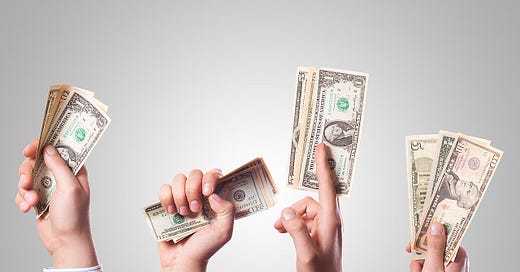


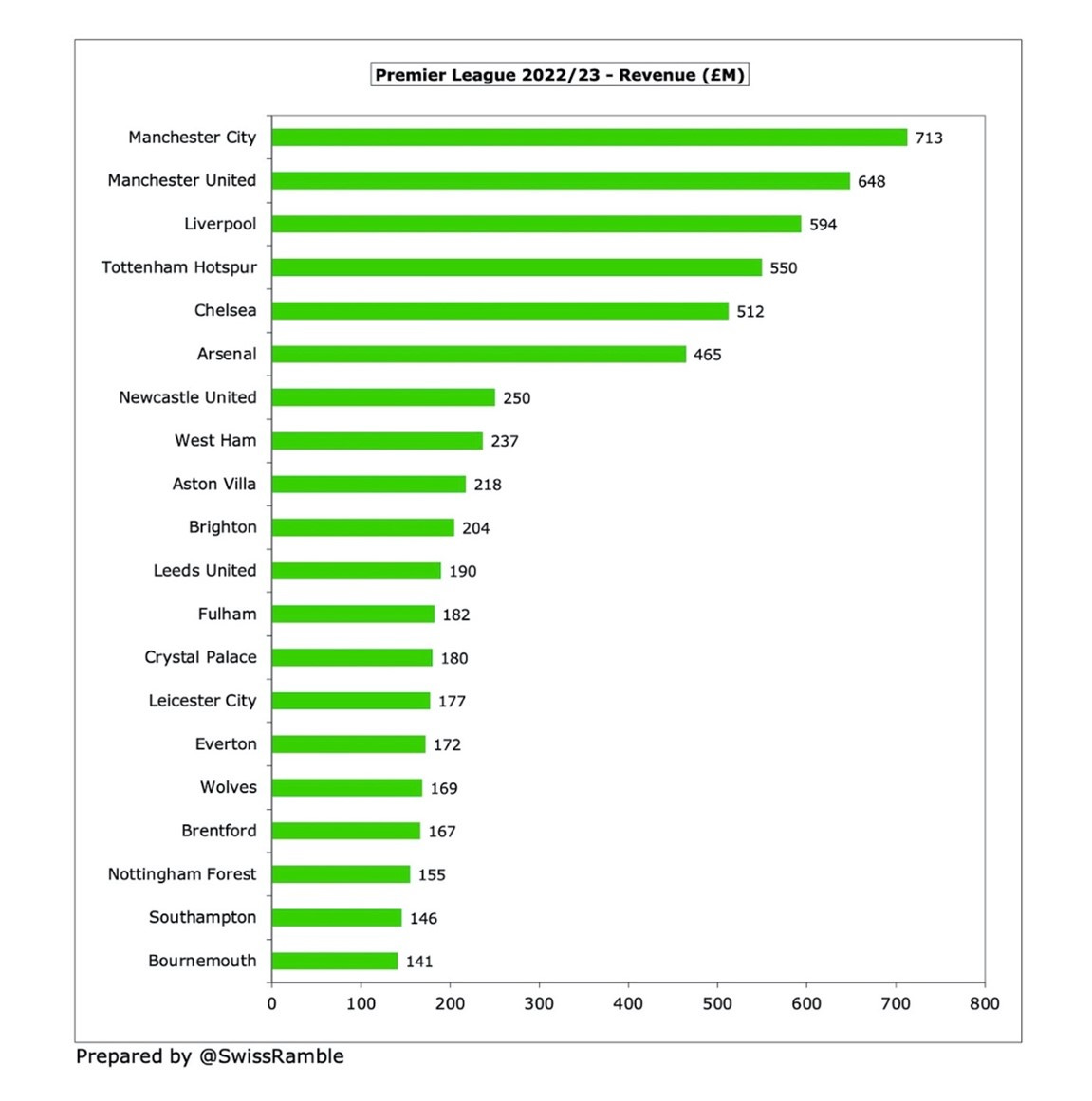
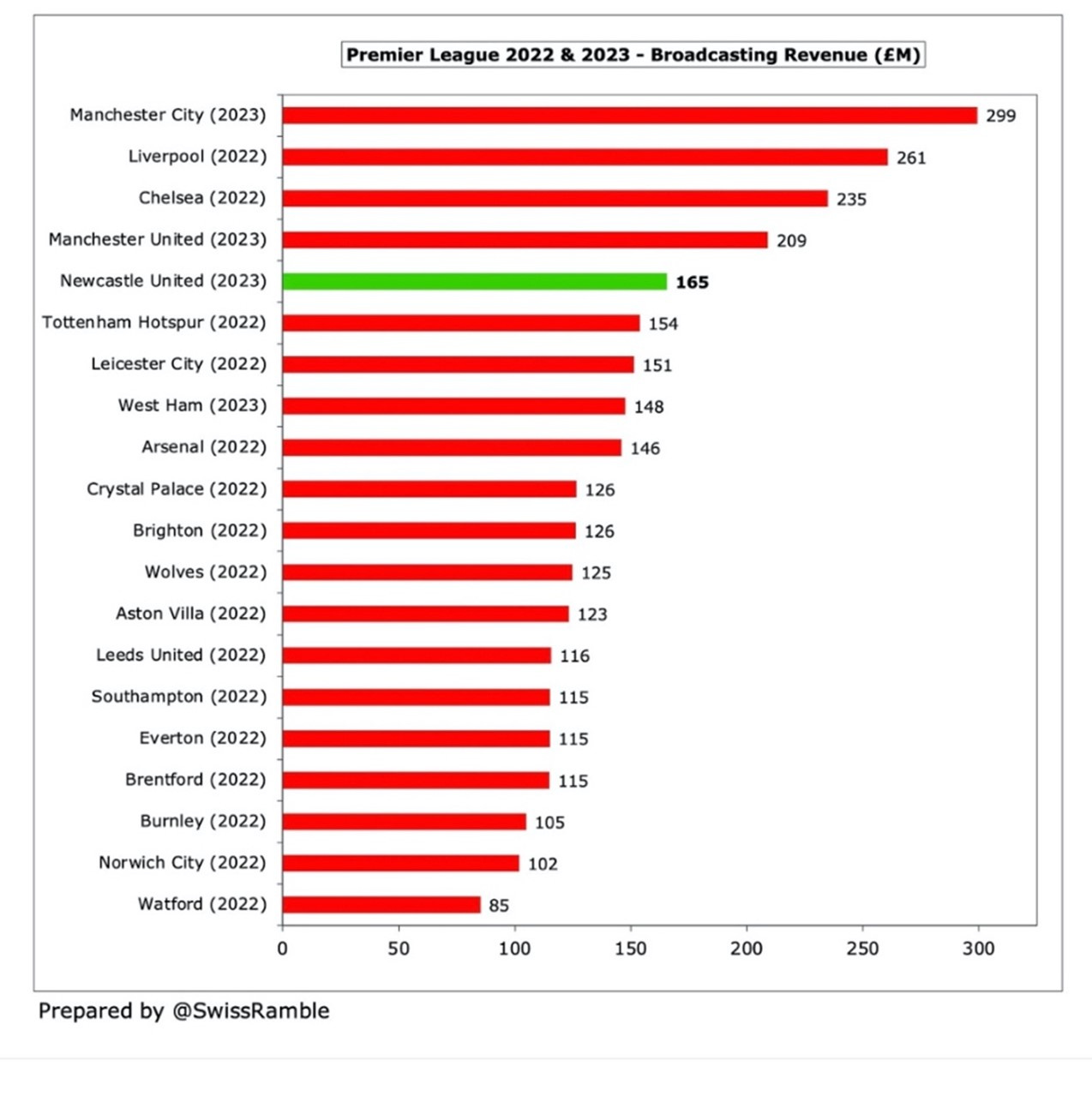
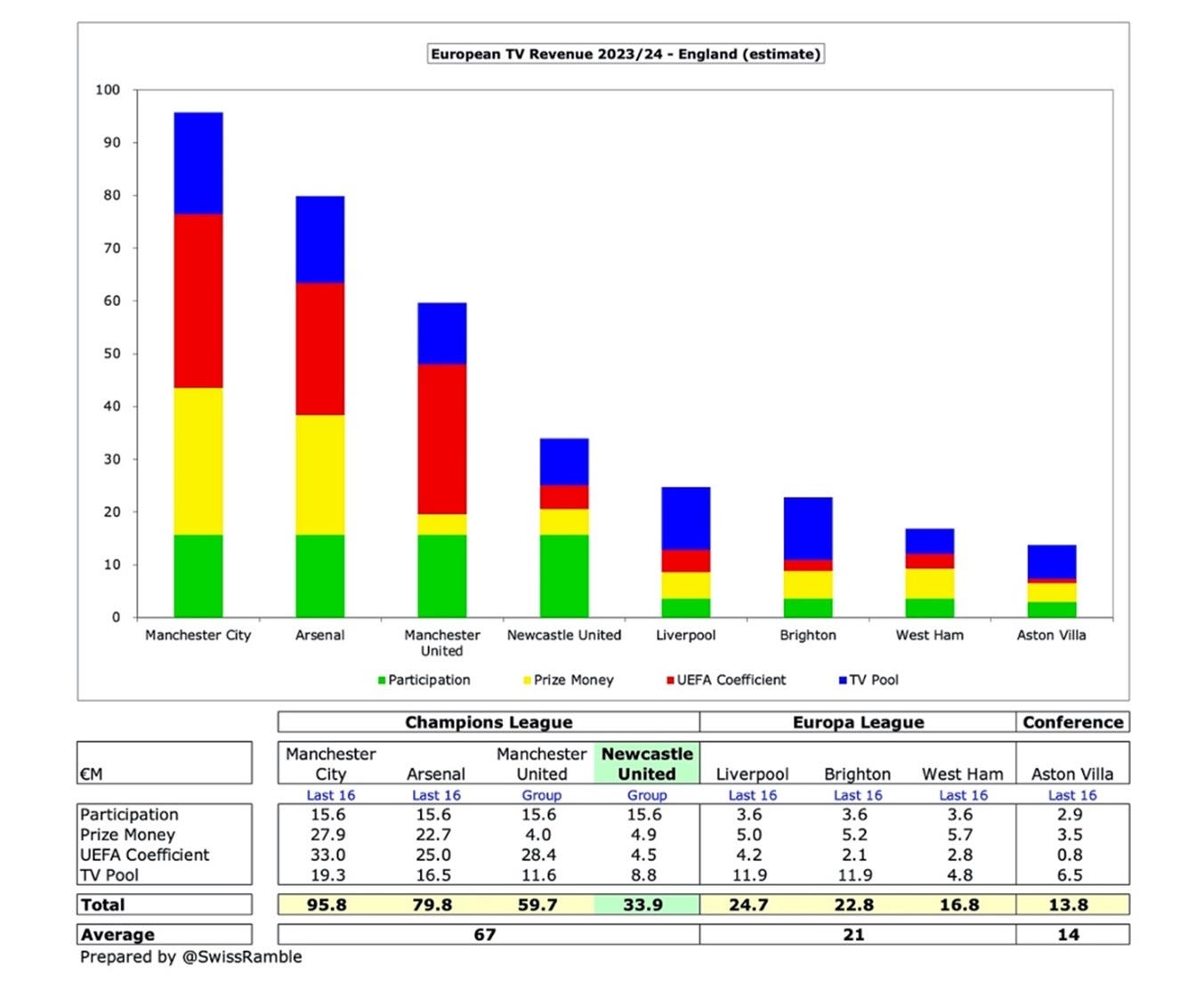
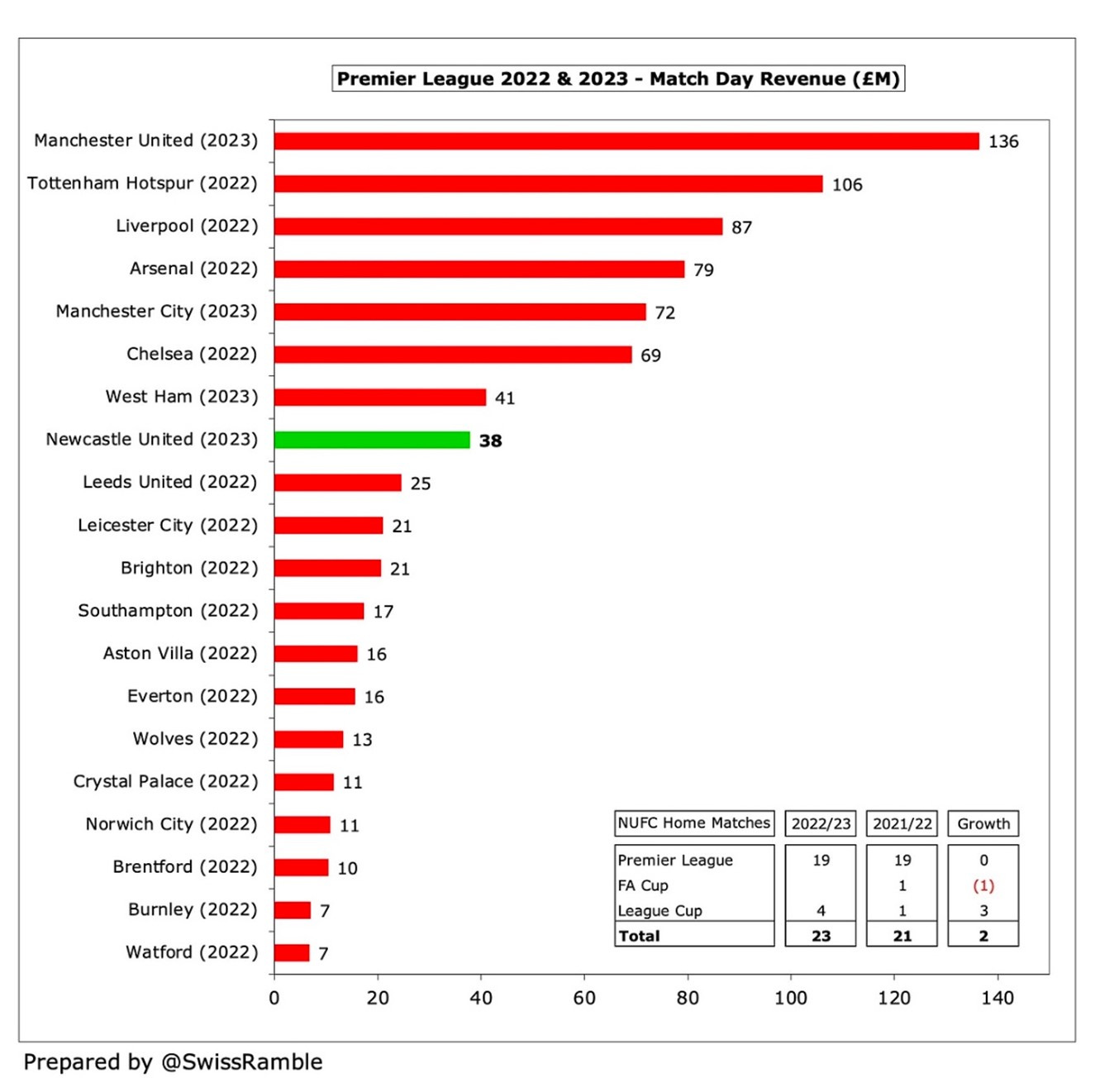
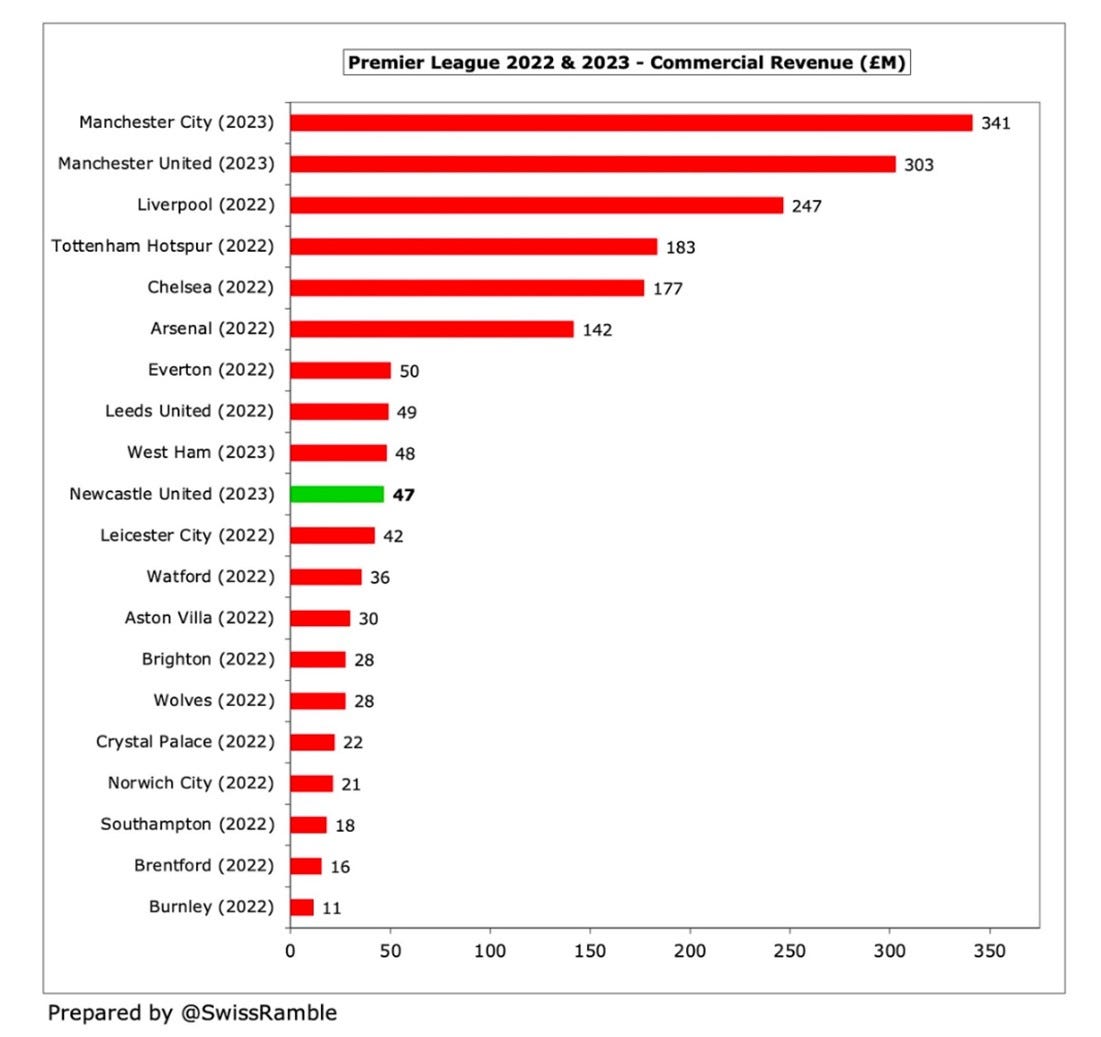
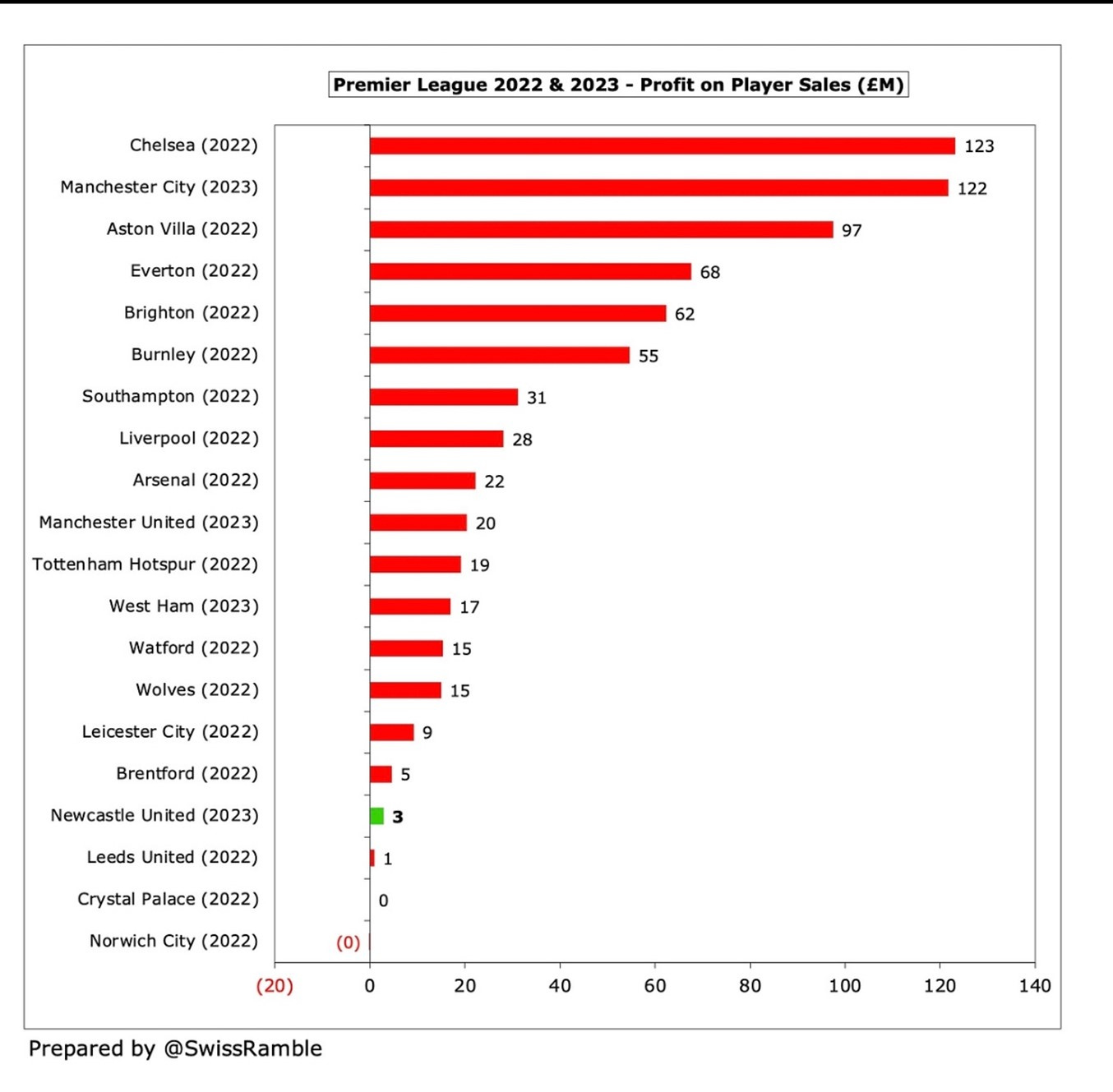
That first graph tells it all really.
To be at 50% of the 'top6' reminds us that basically anything better than 7 th is over reach. Chilling really.
Excellent read